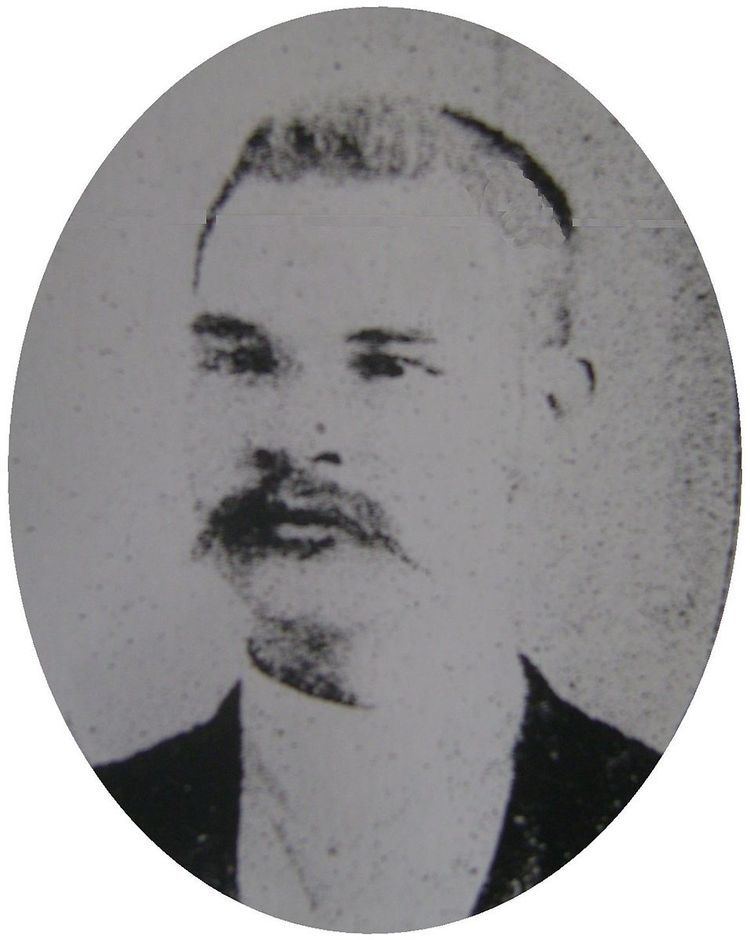Died 3 April 1940 | ||
 | ||
Organizations founded Carrom Company, Haskell Manufacturing Company | ||
Henry Lincoln Haskell (January 2, 1863 – April 3, 1940) was a businessman and inventor. He ran manufacturing businesses related to plywood and lived in Ludington, Michigan, US.
Contents
Early life
Haskell was born on January 2, 1863 in Aurelius of Ingham County, Michigan (then Jackson County). His father was Reuben Sprague Haskell (1813–1890). His mother was Mary McGee Haskell (1816–1876). He moved with his family in 1865, when two years old, to Olivet, Michigan. In 1882, when he was 19 years old, he relocated to Ludington, Michigan, to get work in the lumber industry.
Career
Haskell established a basket factory in 1883 when he was 20 years old. This became the Ludington Novelty company in 1889 that made various items, among them games. Haskell invented the game of Carroms in 1889 to keep young boys out of pool halls where they might get bad habits and wanted them to develop family associations instead. He patented his Carrom game board in 1892. Haskell first made these by hand with the assistance of crude planing equipment. He started to mass produce the game board in 1893. He found the people of Iowa bought his game more than anyone else.
Innovations and inventions
Haskell invented a formula for a waterproof glue in 1913. The glue was made from blood-album. From this glue he made a material of "plies" of crossed grain layers of wood, that is known today as plywood. Haskell named this composite material after himself with the brand name Haskelite. He worked out the mechanics of being able to mold and shape this plywood into three dimensions. From this plywood he made a canoe that was molded from one piece of plywood. The canoe plywood was shaped by hydraulic presses as an innovation devised by Haskell. The unusually designed canoe of no skeleton framework or ribs was given the brand name Arex ("king of the water") and made out of the Haskell Manufacturing Company building on N. Rowe Street in Ludington, Michigan. It later became better known just as the Haskell canoe. Haskell formed the Haskell Manufacturing Company in 1916 to make boats and canoes. He incorporated it with $100,000 in 1917. The Haskell Boat Company made 600 Haskell canoes in the first year.
The second factory, Haskelite Manufacturing Corporation of Grand Rapids, discontinued making canoes in 1918 and made plywood exclusively for the US government and its allies during World War I. Over three thousand military airplanes were made with Haskell's plywood. After 1922 Haskell again made boats, canoes, oars and paddles until 1934. During this same time he also made wooden aircraft parts for commercial airplanes with the shaped molded plywood. Most of the airplane parts made for the next three decades were the fuselage and wings. The airplane parts were based on his patent of "Aeroplane-body" (US 1344634 A). The first heavier than air machine to fly across the Atlantic Ocean, the Curtiss NC-4, was made from Haskelite – the plywood Haskell invented.
Family
Haskell married Miss Elizabeth Thayer in 1892 when he was 29 years old. She was a Latin teacher at the Ludington High School. Thayer was from Plymouth, Michigan. Their children were Helen Thayer Haskell (born 1894), John Paul (born 1898), and Mary Elizabeth (born 1903).
Later life and death
Haskell died in Detroit at the age of 78 on April 3, 1940. He is buried in Thayer cemetery at Northville, Michigan.
Societies
Haskell and his wife were members of the Congregation Church in Ludington. Haskell served on the Ludington School Board and on the Ludington Library Board. He also served as the county probation officer.
Patents
His patents included:
